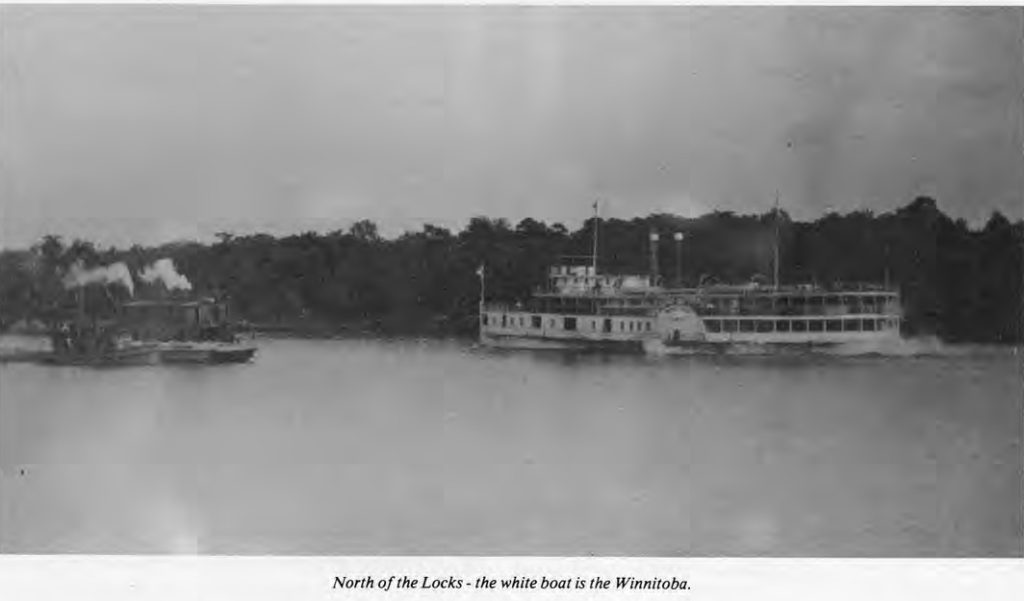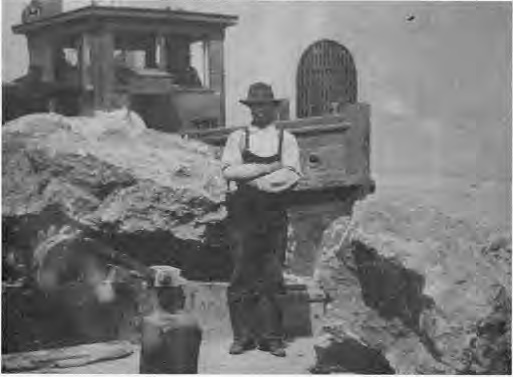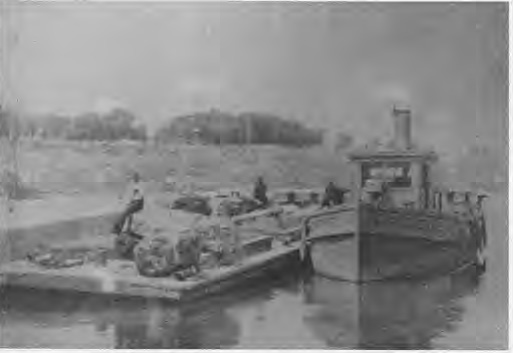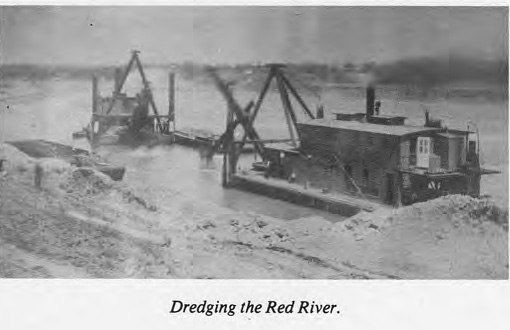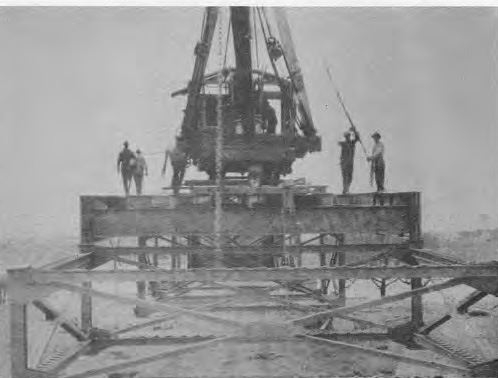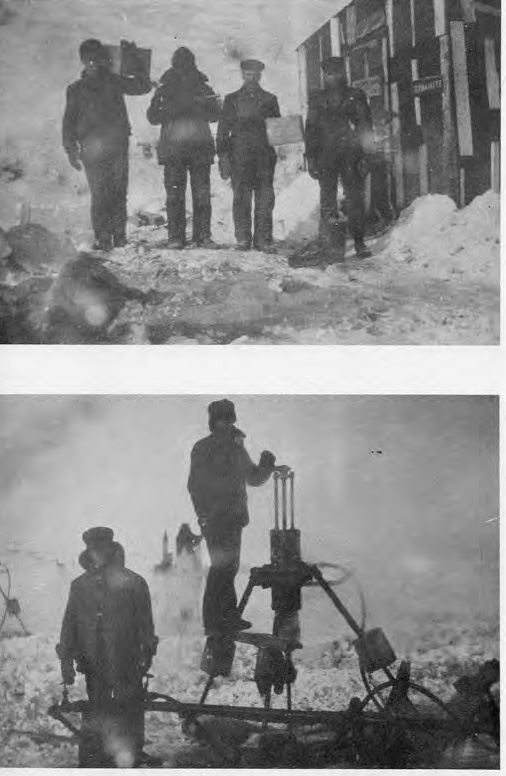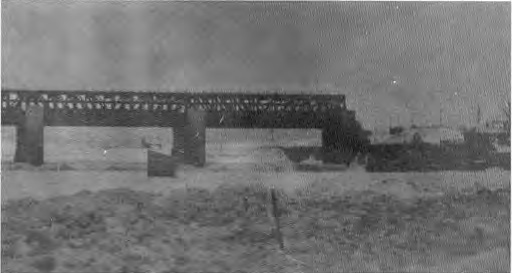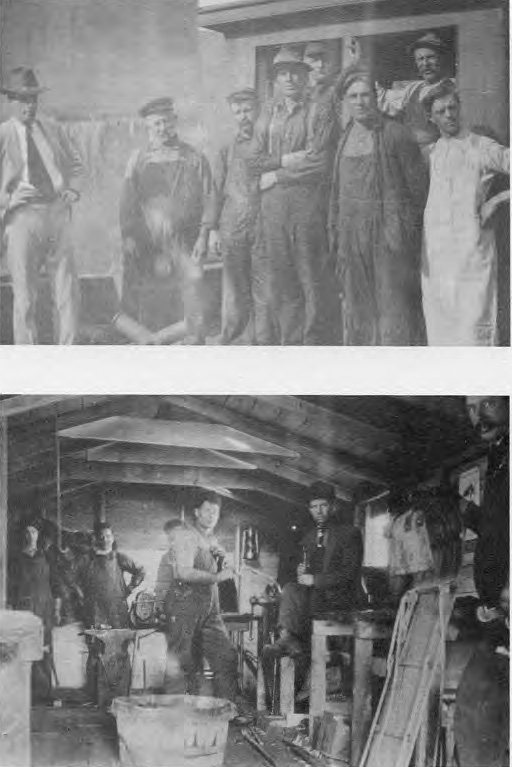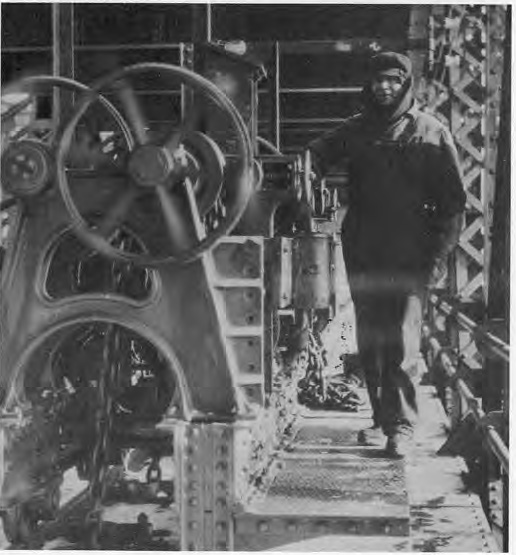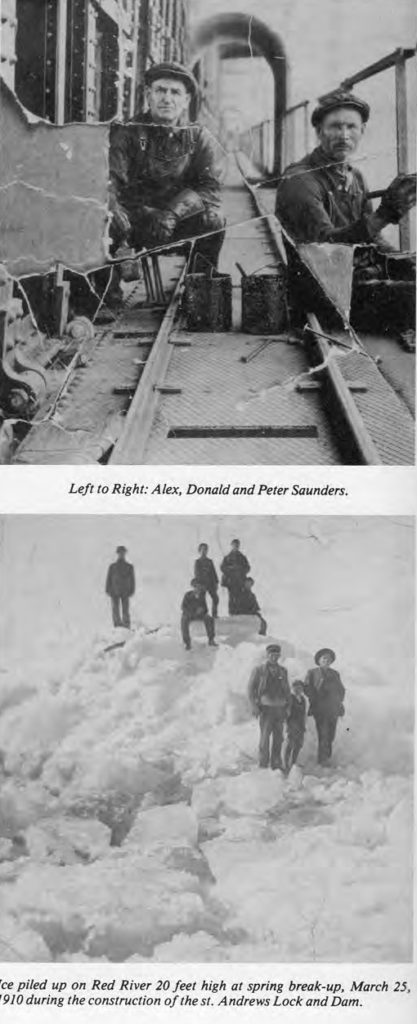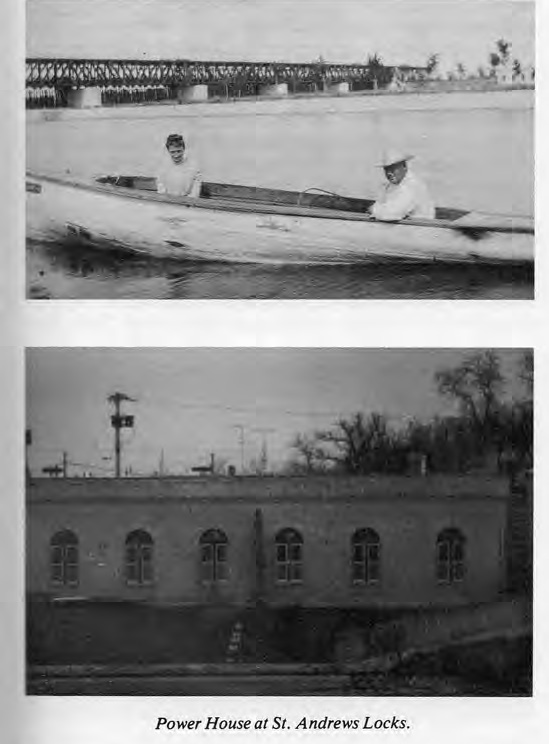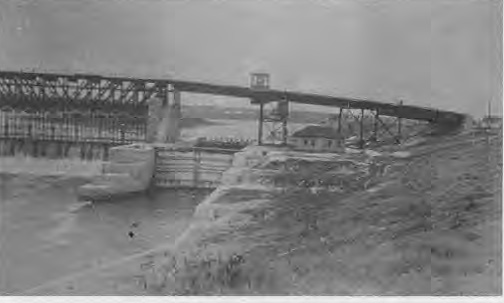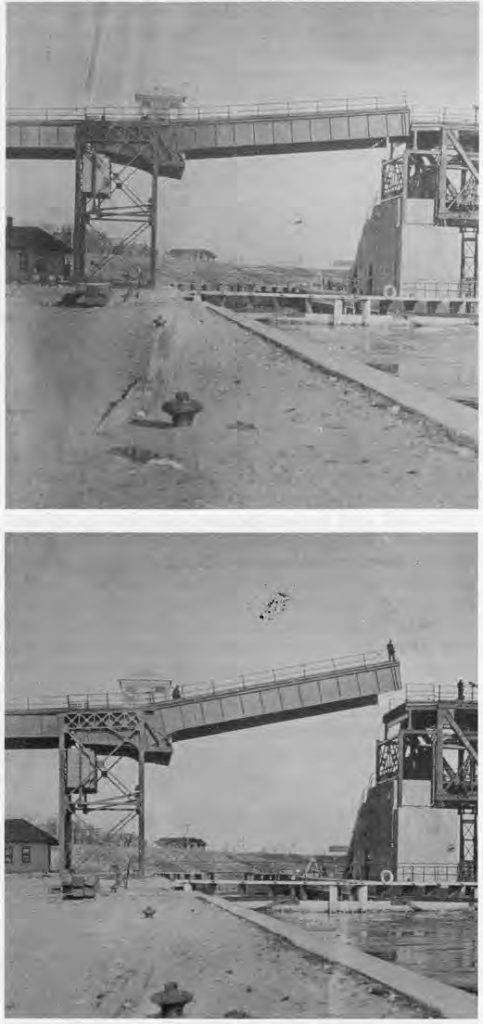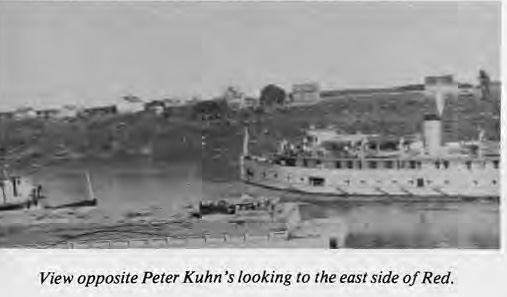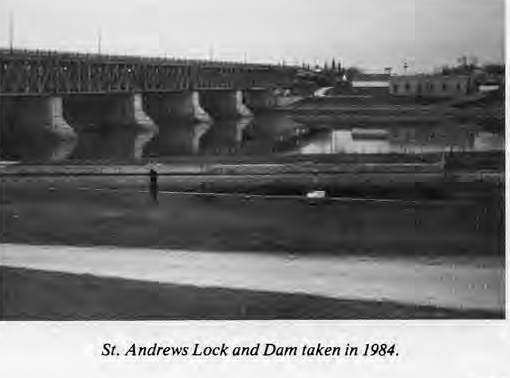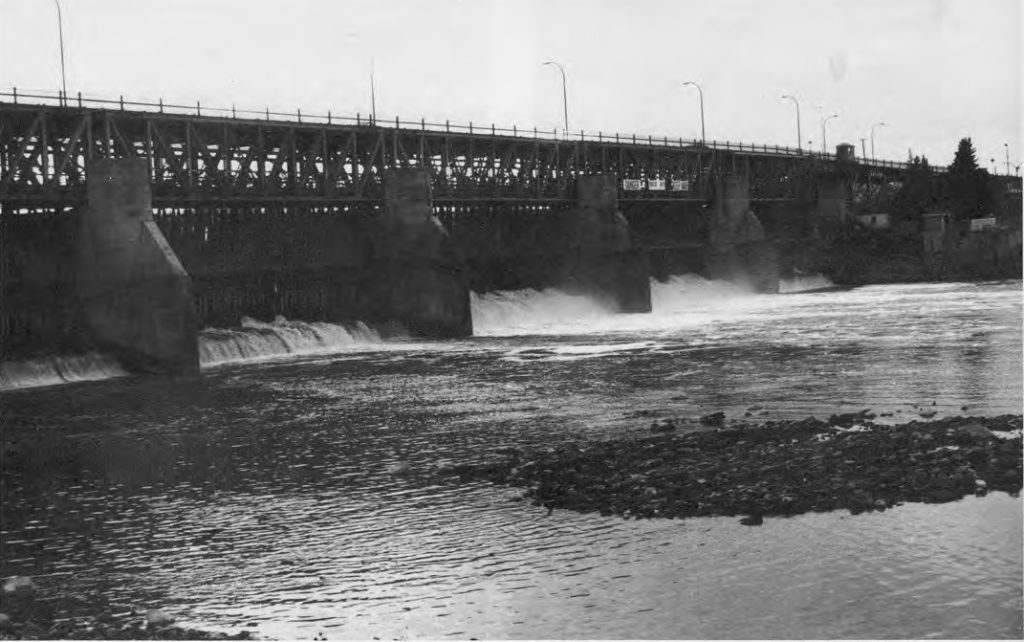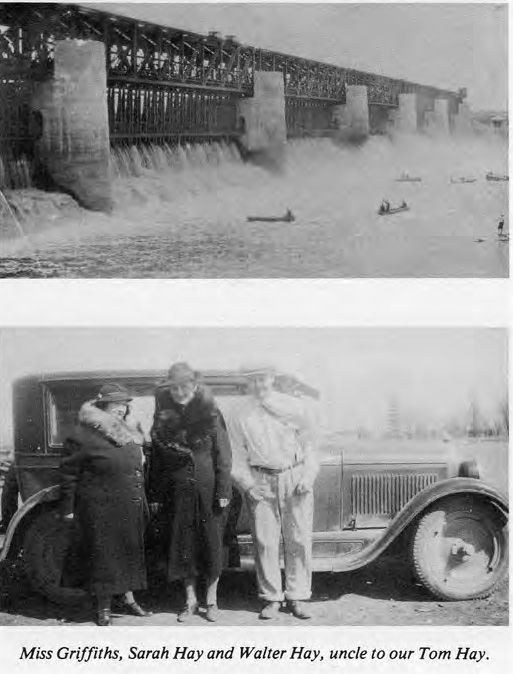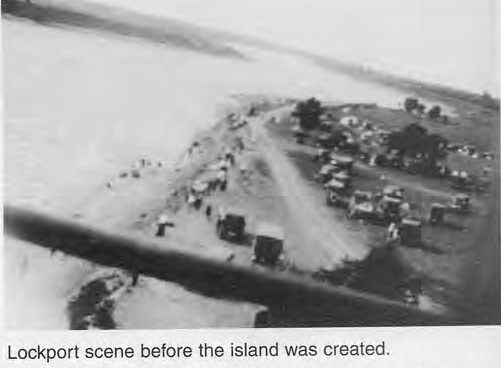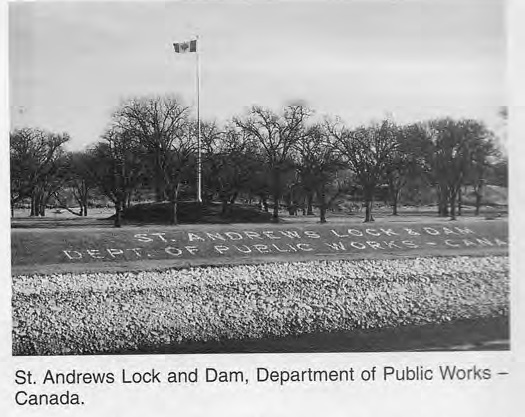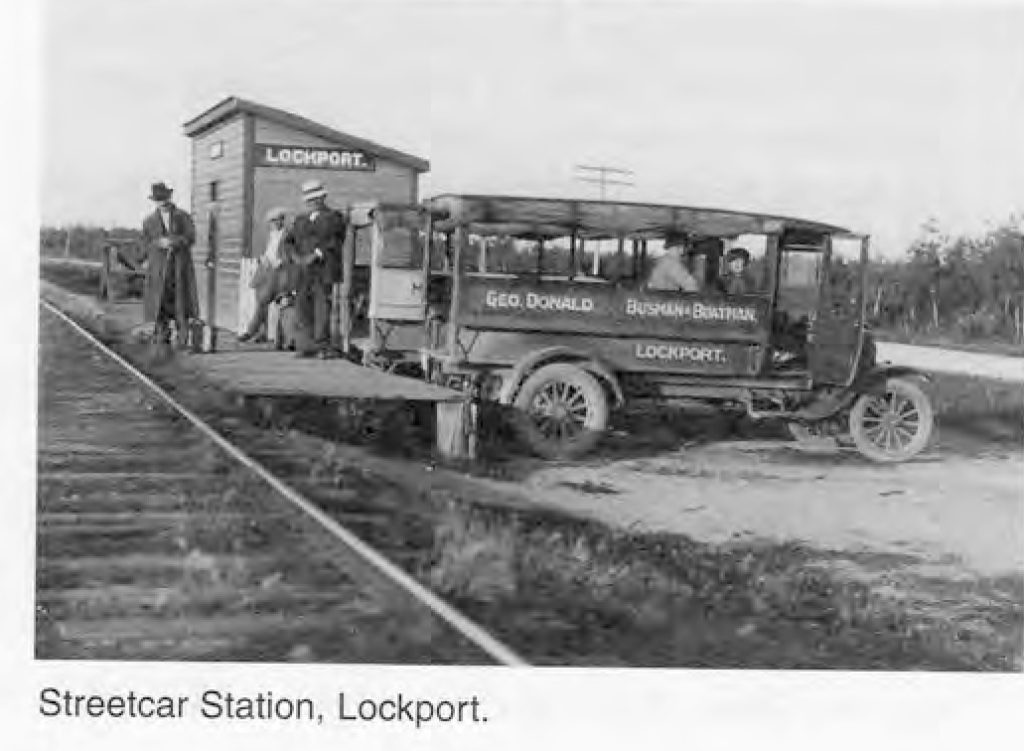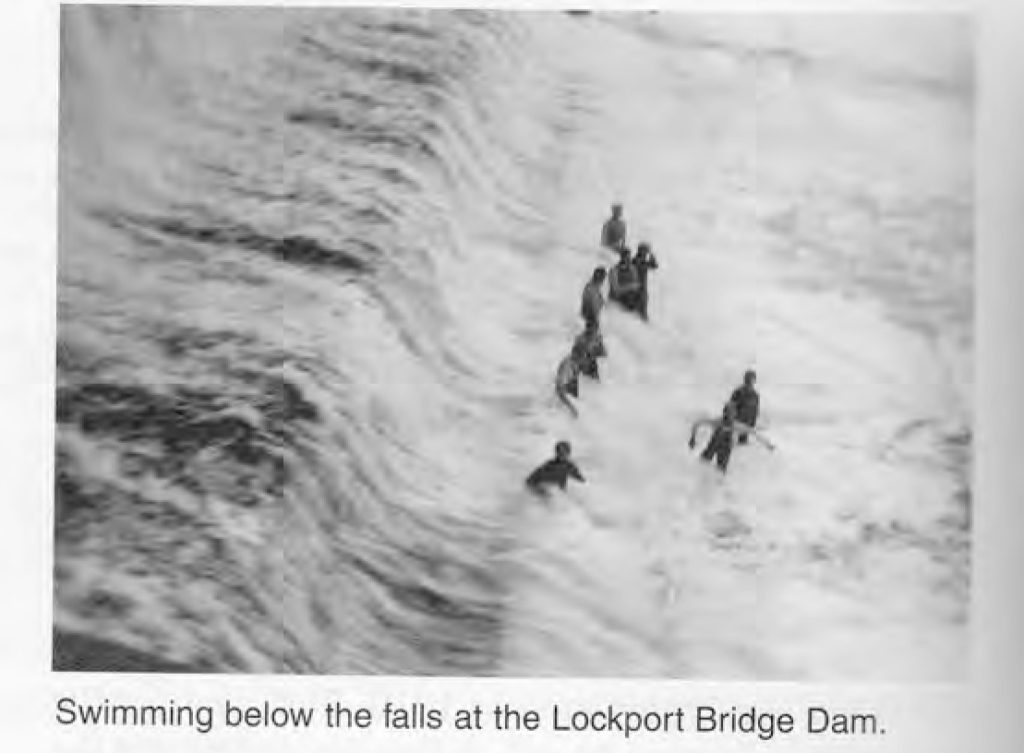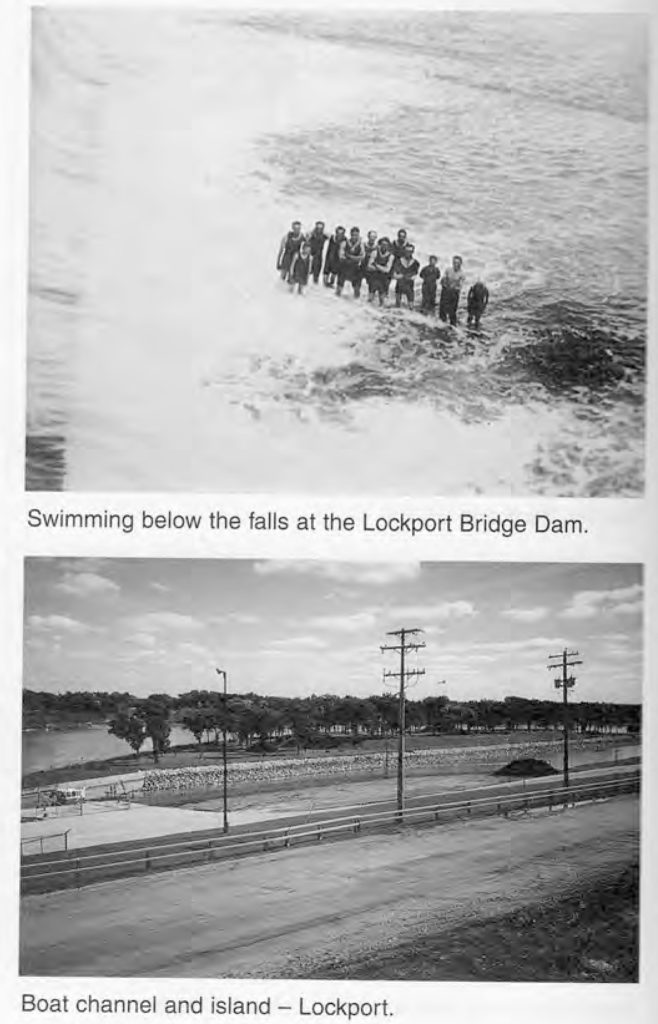St Andrews Lock and Dam
The natural course of the Red River had always been blocked by series of rapids which started just north of Middle-church and continued downstream to the St. Andrew’s rapids. The rapids, while considered by many to be picturesque, were an impediment to navigation as they fall some 15 feet within a 10 mile distance.
From the time of the first paddle steamers on the Red River, it was the dream of river men to gain access to Lake Winnipeg by either blasting a channel through the rapids or building a dam so they could float vessels over them.
In those days, the only steamboat traffic north of Winnipeg took place during the spring floods, when the water rose sufficiently to enable them to get to the lake, from whence they returned, battling manfully against the current with loads of lumber.
Accordingly, towards the end of the last century, surveys were made to determine the best methods of overcoming these obstacles. A dam was selected and set to be constructed north of St. Andrew’s Rapids at what is now called Lockport.
In the supplementary estimates brought down in the Dominion House in July of 1899 was an item for $150,000 for the “ Improvement of St. Andrews Rapids”.
There was two reasons for the site chosen. First, a long bend in the river at this point gave them the necessary room to cut a channel through the land in which a lock could be built and ships could by-pass the dam. Secondly, a natural fault in the rock strata, not high enough to cause a rapids, but high enough to give them easy access to bed rock for their footings was proposed to raise the water level. By means of a movable dam, a height of some 21’, travellers would overcome the fall in the rapids giving at least 9’ navigable depth back towards Winnipeg.
Next, the authorities had to decide what type of dam to build as there were certain difficulties that had to be overcome. The dam chosen must be of a reasonable type, allowing free passage to the driving ice during spring freshets, having in mind the great floods of 1826, 1852, and others. Also, it might have to be removed on very short notice, perhaps in a matter of hours, if necessary. And lastly, atmospheric and wind pressure on Lake Winnipeg, about 27 miles to the north of the site, could drain or raise the water levels. Therefore fluctuations in the water level had to be considered in the design.
After much deliberation and careful study it was decided to construct a Camere type design. The prototype for the dam was found on the Seine River in France, a tidal river much given to flooding in some areas. However, certain new mechanical features were to be embodied in the St. Andrews design, which was to make it unique perhaps world wide. In general, the Camere dam is a fixed structure of concrete or masonry with a series of still truss bridges resting on piers, from which are operated a number of frames containing roll off curtains of wooden lathes. St. Andrew’s Dam was to be the first such structure of this type built on the North American continent.
During the last 3 weeks in January 1900, there were men working on the project and they had removed boulders and cut an opening across the river 8 feet wide through the ice. By mid-Feb. the crew had increased to 20 men and 3 teams, and one month later it was reported that up to 35 men were doing the preliminary work or removing boulders from the bed of the river.
Mr. H. Vautelet was the design engineer on the project. The resident supervising engineer was a Mr. A.R. Dufresne while the selection and design of the dam was under the authority of a Mr. A. St. Laurent. The contractor was Thos. Kelley and the equipment initially used were men with men supplying the labour with picks, shovels and wheelbarrows. Labourers were being paid 15 cent an hour for unskilled, 25 cent an hour for skilled while men with teams were paid $2.50 per day, for a 12 hour day.
By Aug. of 1990 the contractors had contacted Jas. Heap who owned a lot near the site, and obtained permission to build a spur line from the Selkirk Branch to the river for the purpose of getting in more machinery and material needed for the proposed locks. On the 20th of Aug. two teams and several men were working on the tramway.
The first sod was actually turned for the St. Andrews Lock on Monday afternoon, Oct 8th 1900 when a couple of teams starting working with scrapers. The steam shovel was ordered but not yet received on site.
The work was proceeded with until cold weather set in and then the contractors were hindered by winter and then somewhat by the frost in the spring of 1901 as well as high water and wet spring. However, by the end of May, 1901 several gangs and teams were once again at work excavating both the upper and lower entrances as well as the lock pit. This was carried on until the end of June 1901. According to reports, the total quantity of excavation to that date was 20,470 cu. Yards composed of stiff white and blue clay overlaid with a layer of loam, and some sand at the lower entrance. The expenditure for the fiscal year was about $15,400. It is interesting to note that they were paying 35 cents per cu. yard for excavation work. It appears the agents of the project were using River Road as a dumping ground and the Council of St. Andrews Municipality. By resolution, early in 1901, urged the Dominion to clear up the dangerous condition as it was also interfering with drainage.
In 1902 work was suspended again due to high water and work was not resumed unit mid-April.
In June of 1902 the Post Office at St. Andrews North was officially changed to that of Lockport and by July, navigation was blocked for some time owing to kelly Bros. stretching cables across the river at the site. In view of the change in name of the Post Office it wasn’t long until it was suggested that the CPR change the flag station known as “ kelly’s Siding “ To that of Lockport.
The Hon. Mr. Tarte and W.F. McCreary, M.P. for Selkirk were to visit the site during July, 1902 and in view of this expected visit the Reeves and Councils of both St. Andrews and St. Clements Munc. Arranged to wait upon the minister to “urge over the dam into a traffic bridge”. The resolutions were passed, signed and delivered with determination
After the minister’s visited and by mid-Aug. 1902 the big push was on under Engineer Wade and the Contractor. They increased equipment and the crew, as well as laid more tracks to facilitate large amount of excavation. Towards the end of Aug. the large “ steamboiler “ took a tumble from the embankment into the cut and was severely damaged and work delayed. In the spring of 1903 the dam at the lock collapsed and filled the cut with water, which once again delayed work for a time. Also, a couple of their barges were carried away with the spring break up of ice. The project at this point was causing some concern to operation. The project continued to be thwarted by small failures and slow downs in work. Finally, the dam filled in with water again and a local newspaper summed up the incident by concluding, “ it will need retrenching, as the ditch which cost many tons of thousands of dollars is steadily filling up with the same old mud already handled and paid for”.
Toward the end of Sept. 1905 the Hon. C.S. Hyman, Dom. Minister of Public Works visited the project and promised that the Dept. would proceed at once to lengthen, deepen and widen the existing excavation. The public referred to the St. Andrews Dams and Locks project as “ Kelly’s Hole”.
Kelly Bros. of Wpg., were the first contractors and it took them from 1900 to 1905 to excavate. It was in the years 1905 that Kelly was finally relieved of his contract and it was awarded to Messrs. Quinlqn and Robertson of Montreal who also had the contract for concrete.
In April of 1907 the ice on the Red River broke out on Wed. April 17th, and it moved for a short distance and then blocked, causing water to back up and fill in the pit, thereby, once again, putting a stop to work going on at the Locks.
Towards the end of Aug. 1907 the project was employing some 150 men and with this “increase’ in manpower came accidents and labour disputes. To add to the problems typhoid broke out in 1908 and several men had died of injuries or by drowning. To top it all off in Dec. of 1908 when concrete was being worked upon a tramcar went through the trestle carrying two men with it.
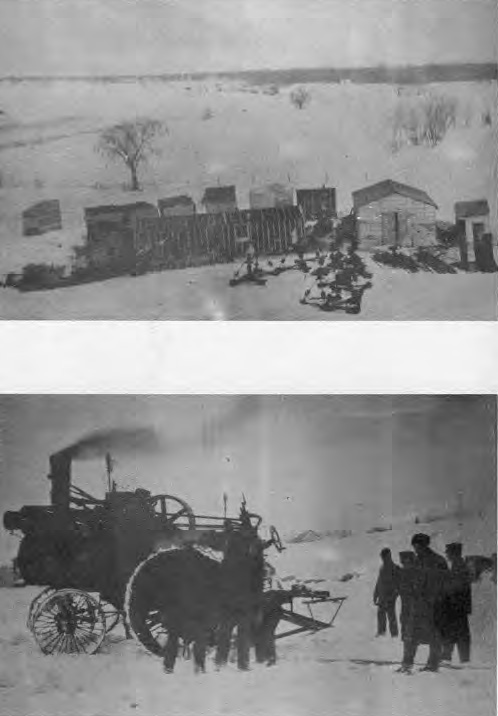
The building of the lock, bridge piers and submerged dam really started in 1905 and continued through to 1908.The Canada Foundry Co. were the contractors for the movable dam, the steel service bridge as well as the repair shop, etc The lock gates were fashioned and built by John Burns of Ottawa. Manitoba Bridge furnished the material and Brown Concrete did the construction of the main bridge in 1908 and completed their share in 1909.The removable part of the dam was supplied and erected by Canada Foundry, who placed the dam in operation by May 10, 1910, and handed it over to the Gov’t personnel one week later.
The steel framer, which with the wooden roll curtains formed the actual movable dam, were 34’9” long and alternated as single and double frames weighed 5 and 9 tons respectively, and were suspended by a shaft carried by clevice attached to hangers passing through the main floor, thus transmitting the weight to the two northernmost trusses. These two trusses also contained the sway bracing thereby eliminating any obstruction to headroom on the southerly operating floor. The curtain frames foot against metal steps set in the permanent dam and they get hoisted to their winter position beneath the operating floor by cranes. When the curtain ( consisting of 50 lathes of varying thickness, long leaf pine on a heavy iron core casting ) is down, it is suspended by chains were 7’-7 3/4” long, and could be extended to a depth of 13’-7 ½”. They are rolled by a continuous chain over pulleys on the curtains frames, the power being supplied by a travelling electric crane operating from a detachable foot bridge hung at an elevator on top of curtains on the downstream side of the frames. The curtains on the downstream side of the frames. The curtains when up may be removed to the operating floor for inspection.
The regulated height of water maintained by the curtains nd the permanent dam is 18.’
Early in Feb. 1909, Mr. A. Durfresne, resident engineer had announced that the channel of the locks would be opened for light draught vessels as soon as the ice broke that spring. The river had been completely dammed with the exception of that channel. People were anticipating being able to run through to Selkirk during the summer of 1909 and excursionists were planning their Wpg. Beach and Lake Wpg. Resort vacations well in advance Meanwhile, the wood camps on Lake Wpg. Were planning hauling large quantities of wood directly into the city.
The contract called for the “ Locks” to be completed by Oct. 1909 after which time the largest lake vessels would be able to pass through in the spring of 1910.
The two bordering munc. Once again in 1909 urged the dept. of Public works to assure that provision had been made to connect the traffic bridge for vehicle and foot traffic.
There were several court cases in connection with the lock. One in particular was a test case. Geo. Tracy back in 1906, lost a team of horses on the project while engaged in removing earth for the reception of stone for the lock piers. It had caved in the two horses were thrown in the river, injured and drowned. He was suing the gov’t for $550.00. The judgement was handed down in Nov. 1909 and Chief Justice Cassells dismissed the case saying he could see no negligence on the part of the gov’t contractor and that anus was on the part of the individual operator of the team of horses to proceed with due caution. The result discouraged others with similar claims. Also, it is to be noted, H.B. Johnstone of Little Britain had his 2 finger on the right hand amputated back in 1908 after having his hand crushed when a gravel car slipped off the track. The same gentlemen had his wrist injured in 1909 from falling timber and Arthur Cox fell through the bridge part of lock in Sept. 1909 and was knocked unconscious for some time.
The lock were closed up Aug. 23, 1909 for the rest of the year and those with small launches were able to pass through quickly and without incident.
In March of 1910 it was announced the lock would be ready by the opening of navigation..
Mr. Geo. H. Bradbury, M.P for Selkirk was, during this time, urging the Dom. Minister of Public Works to provide monies for a “ fishway” at the locks giving fish an avenue up the Red River from Lake Wpg. The Hon. Mr. Pugsley promised a fishway would be provided. The fishway was placed at the east end of the da and was 190’ long giving a clear width of some 5’ and a depth in the pools of 4’. This was a drop of “ between the pools and the total lift provided was 19’. However, this was not to be started until 1913.
The lock at the end of the dam had an effective length of 200’, a width of 45’ and provided 9’ of water over the meter sill. It would accommodate vessels of about 1600 tons burthen. The maximum left was 21’ and average regulated lift was 18’. The lock could be filled and emptied by automatic self-balanced valves, the largest valves of this type in the world, at the time of installation. This type was used for the first time in Canada, at St. Andrews, and their capacity permitted of a full change of water level in the record breaking time of 6 minutes. The material removed from the lock and entrance of the canal was spilled to the south and east of the lock proper forming the island showing in the photo. The south entrance canal also shows in this view.
A repair shop and power house to provide auxiliary electric power was built as a part of the operation, although operating power was purchased eventually under contract from the Winnipeg, Selkirk, and Lake Winnipeg Railway. A subsidiary of Winnipeg Electric.
It is interesting to note that rock for the dam foundation was encountered at a comparatively shallow depth wit formation being flat fissured limestone.
East and west viaduct approaches, consisting of steel towers in concrete pedestal supporting the girders provided a clear roadway of 23’. These abutted earth embankments held by concrete retaining walls.
The total quantities used in the construction were 55,000 cu,yds of concrete and the steel was about half this amount. The main bridge, lock and dam were completed at a cost of 3 ½ million dollars. The labourers used during construction earned about 15 cents per hour with the skilled steel workers earning 25 cent hour.
The St. Andrews Lock were informally opened on Mon., May 2, 1910 in the afternoon when the gov’t boat “ Victoria” made the passage successfully. All the machinery of the locks worked without a hitch. Several hundred people witnessed the event. The machinery for opening and closing the lock gates was not yet installed and this chore was handled by block and tackle.
To the steamer “ Alberta” of Wpg. Must go the honour of being the first vessel of the commercial fleet to make the trip from Wpg. To Selkirk through the St. Andrews Locks. The steamed down the Red River, made a successful passage through the Locks, and reached Selkirk at about 4 pm. The Alberta had on board a n umber of invited guest and for their enjoyment she journeyed well up Lake Wpg.
After the successful; passage of the “Victoria” and “ Alberta” the lock were number one on the city dwellers sight seeing tour. The Northwest Navigation Co. ran excursions every Sat. and passengers had the chance to return to the city by electric railroad either from Lockport or Selkirk, with the fare being .75 cents or $1.00.
As an example, on Sat. May 14, 1910 about 250 excursionists made the trip aboard the steamer “Alberta” from Wpg. To Lockport. An hour was spent at Lockport inspecting the new locks and dam, with the steamer reaching Selkirk at 6;10 pm. After partaking of supper the return trip was made by special train on the electric railway in the record time of 33 mins. The steamer “ Winnitoba” made regular trips did the “ Mikado” all with full loads of passengers, during the summer of 1910 and subsequent seasons.
On Thur. July 14, 1910 the St. Andrews Lock were declared formally opened by Sir Wilfrid Laurier and the Hon. Wm. Pugsley from the deck of the steamer “Winnitoba” in the hearing of some 3000 people on board and an even greater crowd gathered by the Locks. Mr. F.W. Drewery, Pres. Of the Wpg. Bd. Of Trade had the honor of introducing the Prime Minister. Speeches were brief as the sun was very hot. After the ceremony at the Locks, a party of invited guest accompanied Sir Wilfrid on board the gov’t steamer, “ Lady of the Lake’ and proceeded with him to Selkirk where they arrived at and proceeded with him to Selkirk where they arrived at about 5:30 pm amid cheers from citizens assembled at the gov’t dock. Sir Wilfrid had been in Selkirk 16 years earlier ( delivered an address in the old Selkirk Skating Rink ) and renewed old friendships. He said, “ I do not come to Selkirk as Prime Minister or Sir Wilfrid Laurier, only just Laurier A Canadian”… He went on to say “ Selkirk should look forward to increased activity and benefits which will accrue through opening of the St. Andrew’s Lock—all traffic coming and going must pass through Selkirk.’
At the close of the speech the party were driven in a democrat wagon to the electric railway where they boarded a special car and returned to Wpg.
Although the dam was formally opened for service by the late Sir Wilfrid Laurier in 1910, the bascule lift and approach trestles were not to be in placed until 1913.
The ‘Winnatoba’ kept up her weekly excursions from Winnipeg to the mouth of the river, with a stopover at Lockport and Selkirk during the summer of 1910. Her last trip for that season was on Sat. Sept. 24, 1910.
The locks were closed for the season on Mon. afternoon Oct. 31, 1910. Crowds viewed with interest when the sluice gates were raised and the great volume of water that had been held up by the dam since the opening of the locks were allowed to run free. The gates of the dam would not be let down again until the opening of navigation in May, 1911.
It had been a busy first season for Mr. Innis, the Supt. And the staff since the opening of the Locks in July, 1910 there were 181 commercial vessel and 1400 pleasure boats that during the first tear of operation the gross tonnage of shipping through the lock tatalled 44,243 while passenger totalled 7, 692.
During the first week in Feb. 1911 in the H of C in Ottawa , Mr. G.H Bradbury, M.P. for Selkirk, renewed his complaint as to the failure of the Minister of Public Works to provide money “ to construct approaches to the Dam at St. Andrew’s Lock, thereby creating a bridge across the Red River at Lockport.’ The bridge in 1911 had no approaches at either end and there was much pressure to construct same so that vehicular and foot traffic could used this bridge for traffic from east to west.
By mid-June, 1911 it was reported that contracts had been let for the building of approach for the big surface bridge over the dam at St. Andrews Locks, and the firm of “ Quinlan and Robertson” would be the contractors for the excavation and contract for the steel work. The St. Andrews Municipality Continued to pass resolution urging that : obstructions be removed from the public highway” and finally in may 1911 requested the Dominion Gov’t to maintain that portion of River Road from lots 63 to 85, which were being submerge and undermined by the Red River.
By Feb. 1912, tenders were being called for the east and west end approaches to the new steel service bridge at Lockport. At the same time steam-drilling and blasting was going on at the north side of the lock to deepen the channel. In March of the year Typhoid fever broke out amongst the crew who were engaged in blasting out the new ship channel. The men were working in bulkheads driven through the ice. Health authorities were down to the site check out working conditions.
Tenders were called ( March 30, 1912) for the supply and delivery of 2000 cu yds. Of gravel and 15 to 20 cords of stone. The St. Andrews Munc. In Aug. 1912 passed another resolution requesting the Dept. of Public works to repair that portion of River Road, in the vicinity of the Locks as well as Lot 62 opposite the St. Andrews Church which was supposedly destroyed by construction and operation of the Locks.
The Dominion Gov’t had awarded the contract for the bridge to the Brown Const. Co. of Winnipeg for the price of $15,000. The contract had called for a “Strauss Bascule Lift Span” to be operated by electricity in opening and closing for the passage of boats. The structure would require, it was estimated, about 500 tons of steel and perhaps 25,000 cu, yds. Of concrete. The traffic bridge had a floor level some 49’ above high water. Sam Darichuk stated that many of our local people worked on the project with teams of horses. The steel men from Montreal slept in long bunk houses closed to the river and Mrs. Panko was their cook.
The next order of business was the tendering for the “fishway” at the Lock. This was advertised for from Ottawa on Dec. 27, 1912. Also, an order-in-council was passed providing that the ‘ Lock at St. Andrew’s Dam will be kept open on Sunday’—the action of the Dept. of Public Works that “ owing to the short season of navigation the Lock Should be open on Sunday as well as other days.” This announcement become public late in March, 1913.
The first boat to pass up the Red River Wpg. In the spring of 1913 was the “ Bonnitoba” which reached Lockport on Wednesday, April 7. While attempting to pass under the bridge at the Lock the upper part of the boat was carried away. The swollen condition of the river made it impossible for any but the smallest craft to go under the bridge. By April 1913, the St. Andrews municipality passed another resolution which read, “and the bridge on river Road at Lot 62 was destroyed”, and they urged the Dept. of Public Works to replaced and rebuild a permanent bridge to replace same.
A notice date July 30, 1913 called for the tenders to pave the steel service bridge and this work was completed during the next month. It is recorded in the Daily Diary for 1913 that on Friday, Aug. 29, with the temp. at 77 degree, the wind North- Northwest at 10mph, on a clear bright day at 7:00pm.
Mr. Thomas Hay, the Reeve for the R.M. of St. Clements crossed the Bridge in his automobile. Mr. Hay’s Ford with its square brass radiator and straight fenders was the first of many to follow.
The Superintendent over the years were: Feb, 1910 to Oct. 1912 A.S. Innes, Oct. 1912 to March 1915 John Hay ( died on the job),March 1915 to Oct. 1928 S. Coppleman (died on the job), Oct. 1928 to Jan. 1934 H.B. Johnston ( died on the job) Jan. 1934 to July 1952 Norman Ross (retired), June 1952 to June 1966 J.C. Hokanson (retired(, June 1966 to Oct. 1972 T.H Sinclair( retired), Oct. 1972 to the present time, Mr. Norman R. Lalchumn. A brief word about Norman Lalchun, the present Supertendent of the Locks: Norman was born at Gonor, Man on the East side of the Red River on Lot 182, in the year 1932. Norman started working at the Locks back in 1948/49, prior to his 16th birthday and while he was still in school. In 1952 he started working permanently as a labourer and by 1956 was classified as special Labour and Finally A Canal Man in 1963. In 1966 he was promoted to Asst. Supt. And in 1972 he was appointed Supt. Of the Marine Facilities in charger of the St. Andrew’s Lock and Dam as well as the Selkirk Dry Docks, a position he enjoys up to this time in history. Norman, his wife Janet and their two children, dean and Dayna, live at 6644 Henderson Hwy. in Gonor, on the bank of the Red River.
Lockport
By Marge Paradoski
Lockport is unique in the fact that it is built on both side of the Red River. Well-Known for its excellent fishing, it boats over a dozen species of fish, all of which can be caught from the bank of the river or from boats. Sturgeon was in abundance many years ago as they used to spawn south of Lockport before the lock and dam were built. Their natural spawning grounds disappeared and so did the sturgeon.
The law now protects the sturgeon. If caught they must be released.
The construction Of Lockport Bridge began in 1900 and was completed in 1910. The steel for the bridge was shipped by rail. A line was built from the track west of Highway #9 running alongside a field, which is now Skinner Wet and Wild. These tracks were removed upon completion of the bridge.
The first official opening of St. Andrew’s Lock and Dam was July 14, 1910 by Sir Wilfred Laurier and the Honourable William Pugsley aboard the steamer “Winnitoba”. The First boat through the lock was the Alberta.
The design for Lockport Bridge was a first for North America. It was taken from a design of a bridge over the Seine River in France.
Another first in Canada was the method of emptying and filling the lock through which the boats passed. The design uses automatic self- balanced valves and can fill or empty the locks in six minutes.
This lock system allows access to Lake Winnipeg from the south and Winnipeg from the north.
Pleasure craft and commercial craft make use of the lock daily all summer.
The island south of the bridge was constructed of earth removed from the canal entry. Today this island has become home to several Canada geese.
These number grow every year.
Lockport is also home to a growing number of pelicans. These birds nest here in sloughs and the mouth of the floodway. They are increasing in numbers annually. The : Lockport Air force” competes for the fish with the fisherman. Many people drive out to Lockport from Winnipeg to watch these pelicans.
Lockport is known for its eating placed and for being a short driver from Winnipeg. It offers a great variety of fast foods or fine licensed dinning.
On the West Side of the bridge, a Mini-Mall offers a variety of services. There is a gift shop, two restaurant, a satellite centre, insurance dealer, a pharmacy, a doctor and a chiropractor. There are two gas bars, two Skinners as well as an outfitter fishing shop and a small motel-like setting for renting to fisherman and hunters. Guides are also available.
East of the bridge many other service are available Licensed dinning, fast food restaurant, a hotel and liquor mart, an appliance business and a trailer court. The museum, which is called Kenosewun, means, : there are many fishes”, The ground around the museum is an archeological site with evidence from 3000 years ago showing sign of human habitation in this area. Prior to becoming a museum site this property was home to a permanent amusement grounds for many years. The E.J. Casey Show ran a fair-sized business here. They broke a couple of records with a flagpole site and the length of time on a Ferris wheel. They also hosted an Indian Pow Wow. It was frequently a busy placed.
At the same time there was a mid-way. There was also a driver-in theatre on the West Side by Highways #9. Lockport was an entertainment centre and still is. In the summer there are the water slides and in winter the Children’s Festival. This festival, usually held on the river, has been moved to higher ground due to some unseasonable warm weather, Ther is entertainment for young and old. Skidoo rides, sleigh rides, tubing, skating, fishing, all types of games and stage entertainment.
In the days before bus service a street-car ran from Winnipeg to Selkirk. There was a station closed to High #9 across from Steve Avenue. Many people came by street-car and were transported by one of two buses to the river to fish. Mabel Donald ( Davis) drove one bus. Mabel was Canada’s first woman bus driver. Her bus has been restored and can be seen at different events run by the Manitoba Antique Automobile Association.
In the early years after the bridge was complete many young people swam close to the dam.
Swimming was a great pastime for many boys and girls in this community.
Lockport is a busy community. Business and family ties keep many people coming back and Lockport continues to grow yearly.
